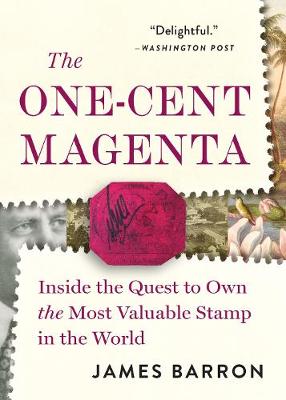
MurderByDeath
Written on Jan 21, 2018

Bookhype may earn a small commission from qualifying purchases. Full disclosure.
When it was issued in 1856, it cost a penny. In 2014, this tiny square of faded red paper sold at Sotheby's for nearly $9.5 million, the largest amount ever paid for a postage stamp at auction. Through the stories of the eccentric characters who have bought, owned, and sold the one-cent magenta in the years in between, James Barron delivers a fascinating tale of global history and immense wealth, and of the human desire to collect. One-cent magentas were provisional stamps, printed quickly in what was then British Guiana when a shipment of official stamps from London did not arrive. They were intended for periodicals, and most were thrown out with the newspapers. But one stamp survived. The singularone-cent magenta has had only nine owners since a twelve-year-old boy discovered it in 1873 as he sorted through papers in his uncle's house. He soon sold it for what would be $17 today. (That's been called the worst stamp deal in history.) Among later owners was a fabulously wealthy Frenchman who hid the stamp from almost everyone (even King George V of England couldn't get a peek); a businessman who traveled with the stamp in a briefcase he handcuffed to his wrist; and John E. du Pont, an heir to the chemical fortune, who died while serving a thirty-year sentence for the murder of Olympic wrestler Dave Schultz. Recommended for fans of Nicholas A. Basbanes, Susan Orlean, and Simon Winchester, The One-Cent Magenta explores the intersection of obsessive pursuits and great affluence and asks why we want most what is most rare.
